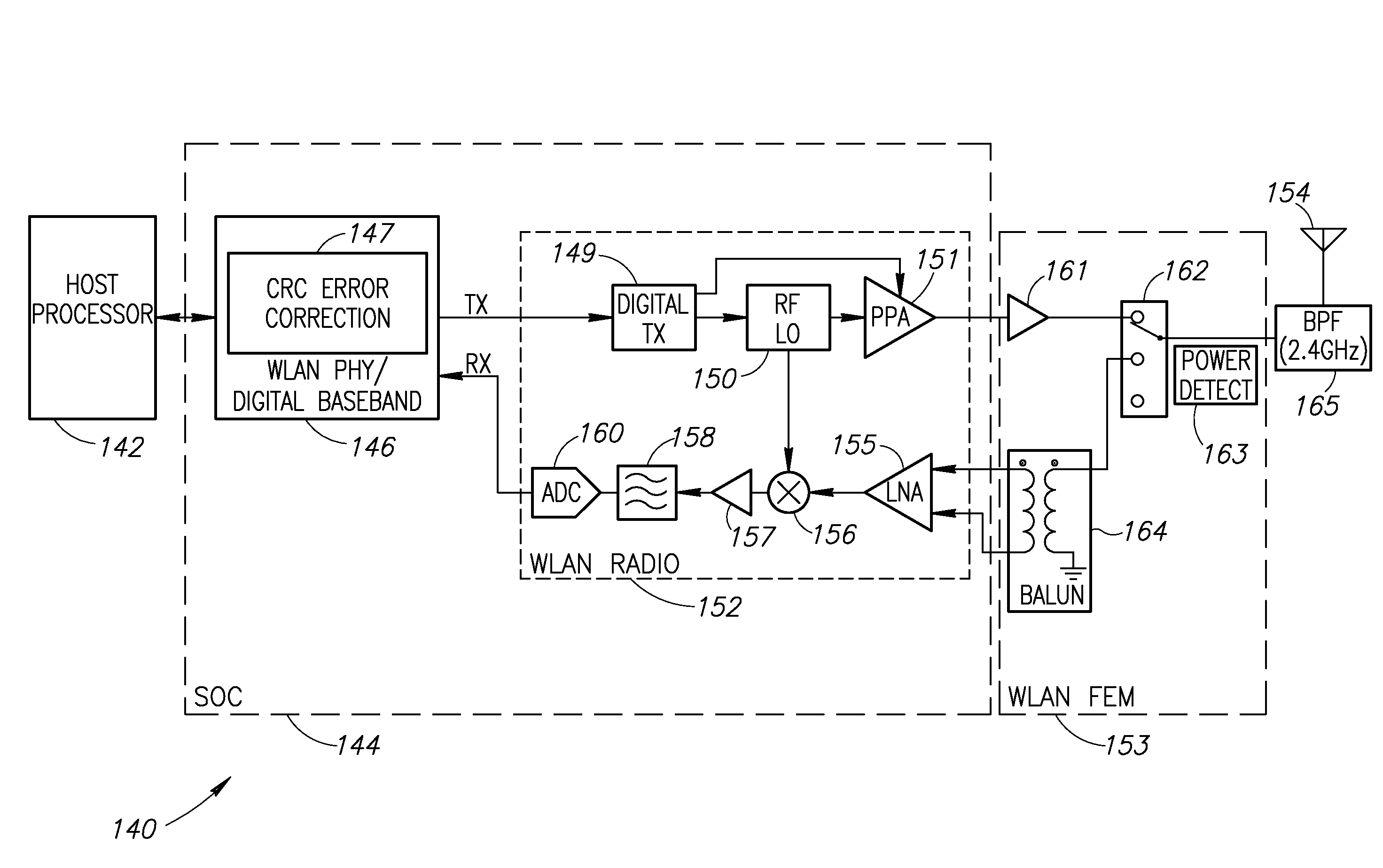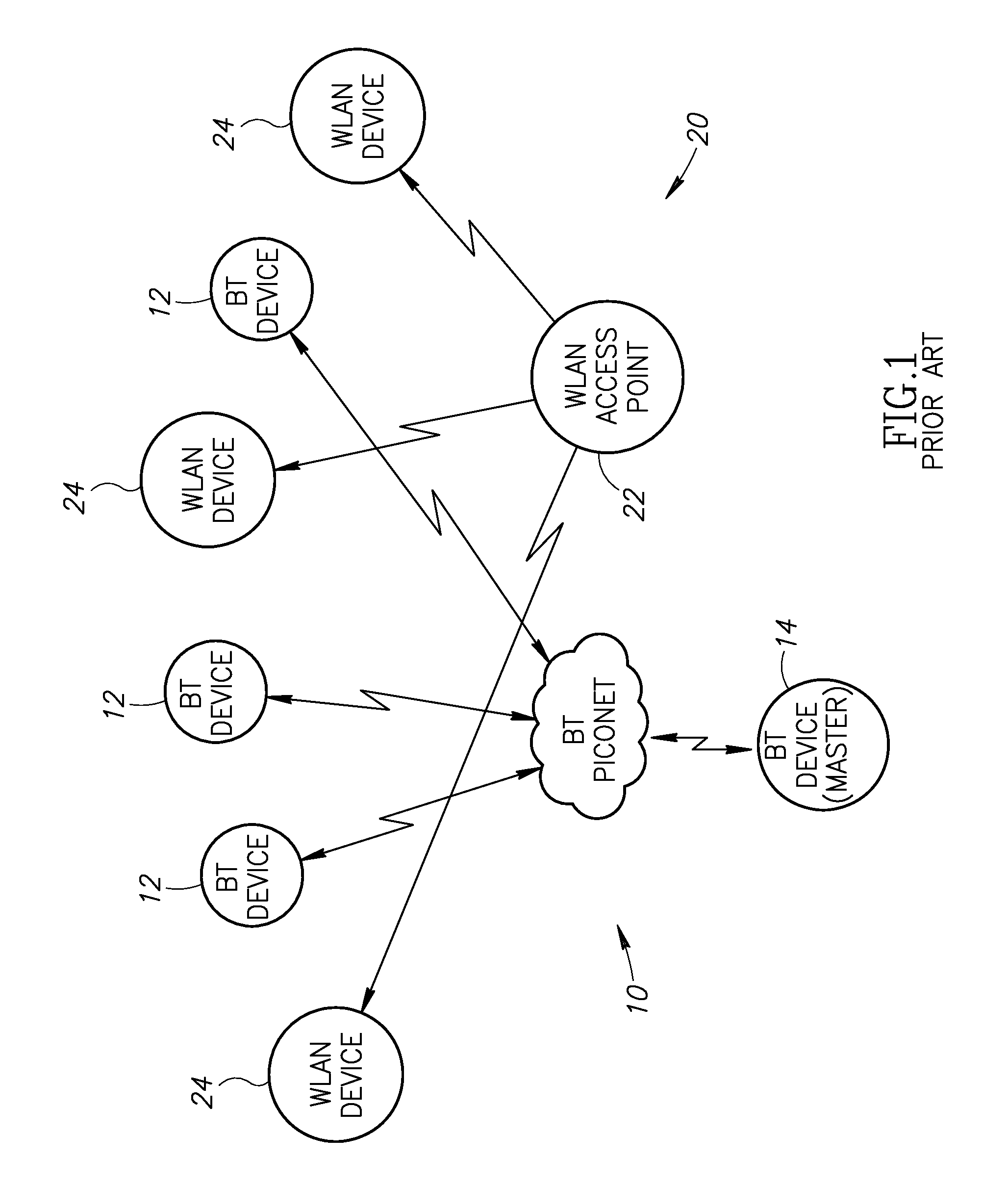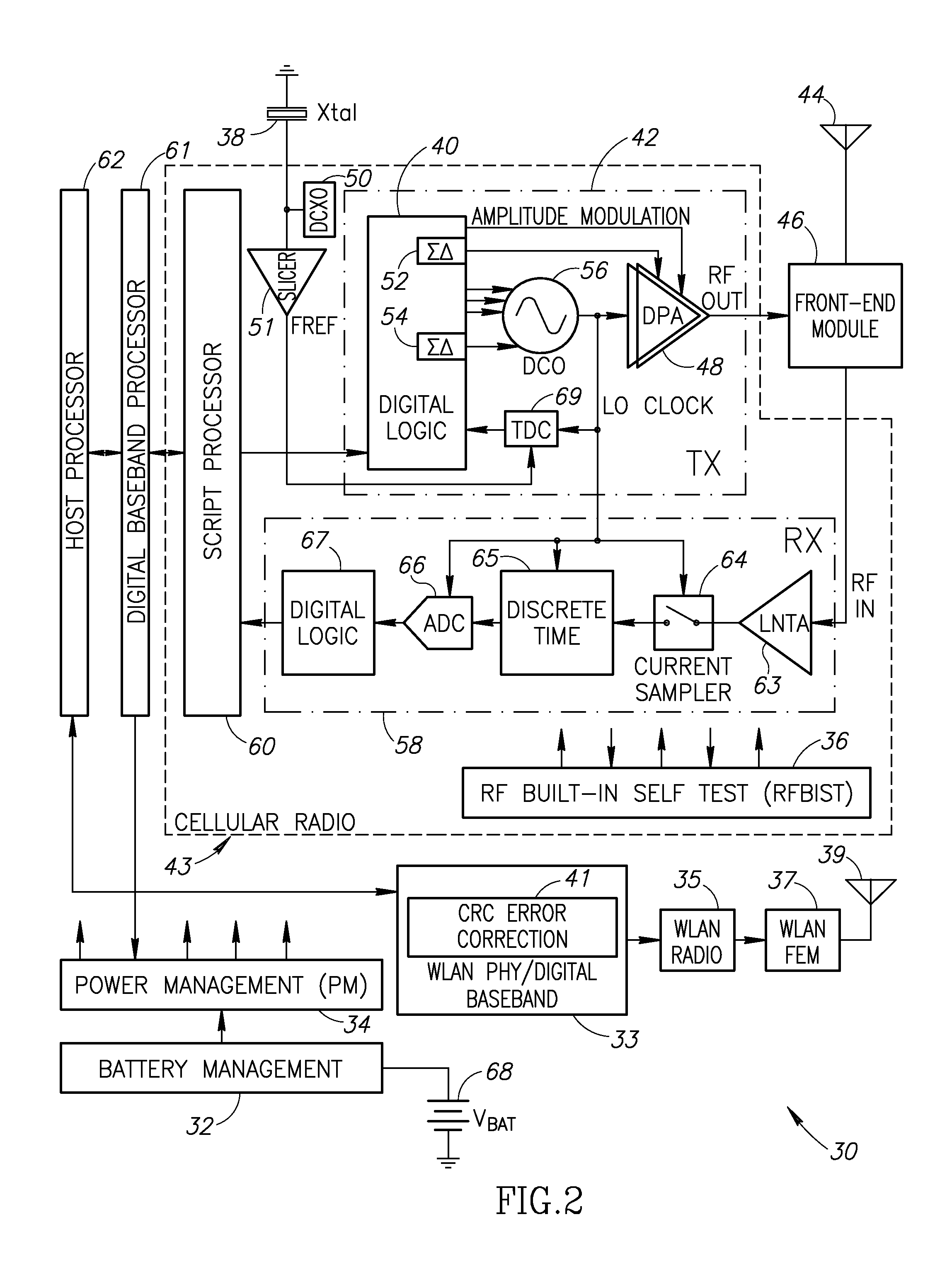Range Extension and Noise Mitigation For Wireless Communication Links Utilizing a CRC Based Single and Multiple Bit Error Correction Mechanism
a wireless communication link and error correction technology, applied in the field of data communication, can solve the problems of inability to meet the needs of users, so as to improve the probability of reception, improve the sensitivity of voice, and eliminate the effect of disconn
- Summary
- Abstract
- Description
- Claims
- Application Information
AI Technical Summary
Benefits of technology
Problems solved by technology
Method used
Image
Examples
Embodiment Construction
Notation Used Throughout
[0059]The following notation is used throughout this document.
TermDefinitionACAlternating CurrentADCAnalog to Digital ConverterADPLLAll Digital Phase Locked LoopASICApplication Specific Integrated CircuitAVIAudio Video InterfaceBERBit Error RateBISTBuilt-In Self TestBMPWindows BitmapBPFBand Pass FilterCAMContent Addressable MemoryCMOSComplementary Metal Oxide SemiconductorCPUCentral Processing UnitCRCCyclic Redundancy CheckDBBDigital BasebandDCDirect CurrentDCODigitally Controlled OscillatorDCXODigitally Controlled Crystal OscillatorDPADigitally Controlled Power AmplifierDRACDigital to RF Amplitude ConversionDRPDigital RF Processor or Digital Radio ProcessorDSLDigital Subscriber LineDSPDigital Signal ProcessorDSSSDirect Sequence Spread SpectrumEDGEEnhanced Data Rates for GSM EvolutionEPROMErasable Programmable Read Only MemoryFCCFederal Communications CommissionFCWFrequency Command WordFECForward Error CorrectionFEMFront End ModuleFMFrequency ModulationFPGAFi...
PUM
 Login to View More
Login to View More Abstract
Description
Claims
Application Information
 Login to View More
Login to View More - R&D
- Intellectual Property
- Life Sciences
- Materials
- Tech Scout
- Unparalleled Data Quality
- Higher Quality Content
- 60% Fewer Hallucinations
Browse by: Latest US Patents, China's latest patents, Technical Efficacy Thesaurus, Application Domain, Technology Topic, Popular Technical Reports.
© 2025 PatSnap. All rights reserved.Legal|Privacy policy|Modern Slavery Act Transparency Statement|Sitemap|About US| Contact US: help@patsnap.com



